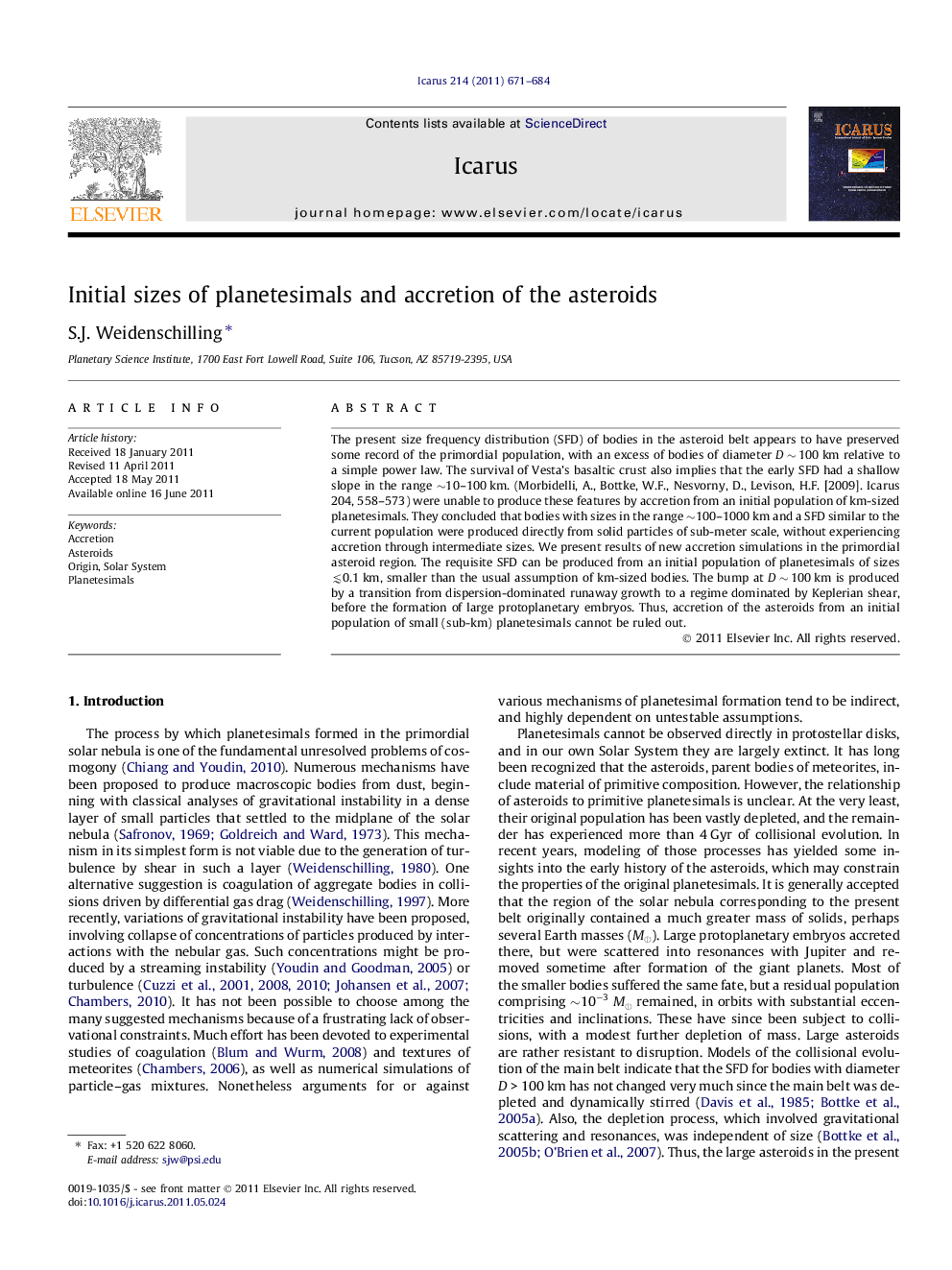| Article ID | Journal | Published Year | Pages | File Type |
|---|---|---|---|---|
| 1774205 | Icarus | 2011 | 14 Pages |
The present size frequency distribution (SFD) of bodies in the asteroid belt appears to have preserved some record of the primordial population, with an excess of bodies of diameter D ∼ 100 km relative to a simple power law. The survival of Vesta’s basaltic crust also implies that the early SFD had a shallow slope in the range ∼10–100 km. (Morbidelli, A., Bottke, W.F., Nesvorny, D., Levison, H.F. [2009]. Icarus 204, 558–573) were unable to produce these features by accretion from an initial population of km-sized planetesimals. They concluded that bodies with sizes in the range ∼100–1000 km and a SFD similar to the current population were produced directly from solid particles of sub-meter scale, without experiencing accretion through intermediate sizes. We present results of new accretion simulations in the primordial asteroid region. The requisite SFD can be produced from an initial population of planetesimals of sizes ≲0.1 km, smaller than the usual assumption of km-sized bodies. The bump at D ∼ 100 km is produced by a transition from dispersion-dominated runaway growth to a regime dominated by Keplerian shear, before the formation of large protoplanetary embryos. Thus, accretion of the asteroids from an initial population of small (sub-km) planetesimals cannot be ruled out.
► The present asteroid belt preserves a record of an early population with an excess of bodies of size ∼ 100 km. ► Simulations of accretion from km-sized planetesimals fail to produce this size distribution. ► Accretion from planetesimals with sizes ∼ 100 m yield size distributions consistent with the asteroid population. ► Primordial planetesimals may have been smaller than the usual assumption of km-sized bodies.
